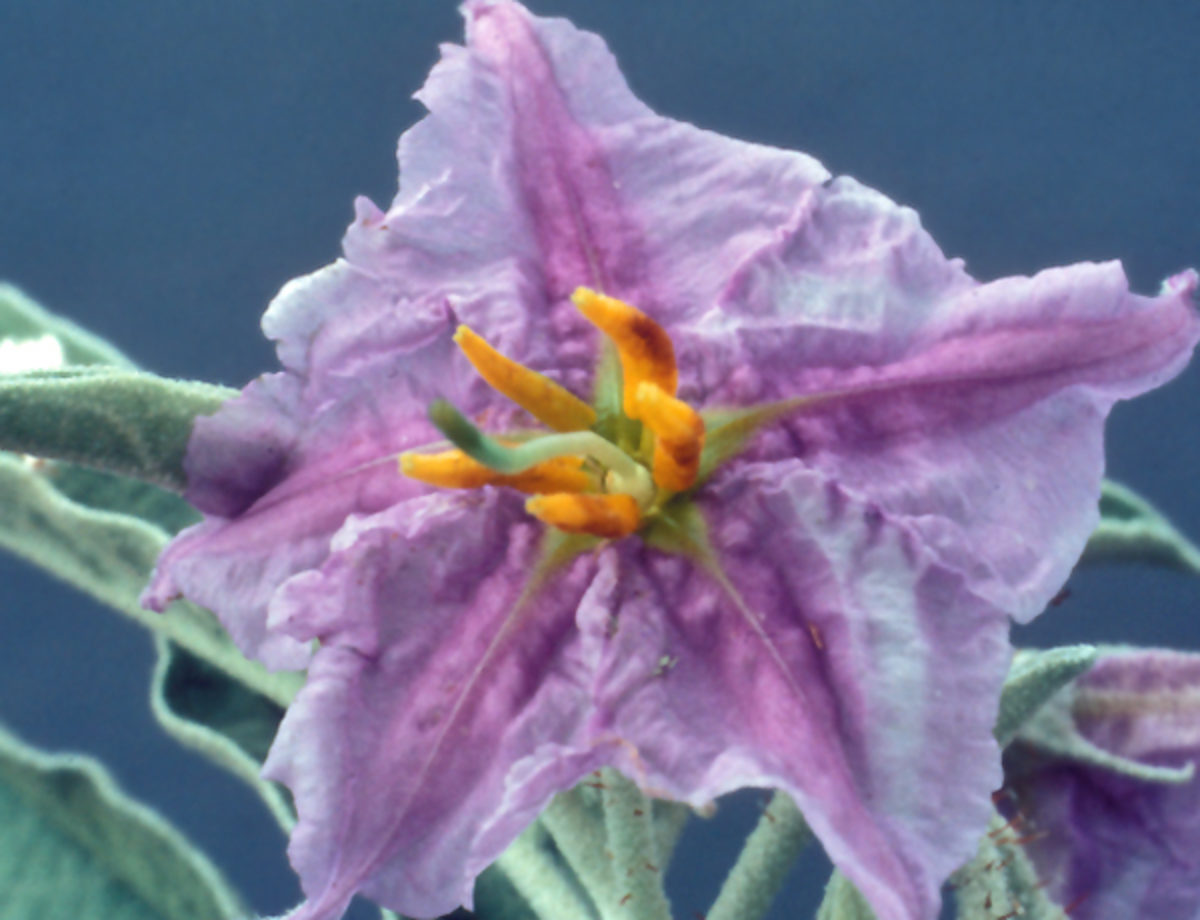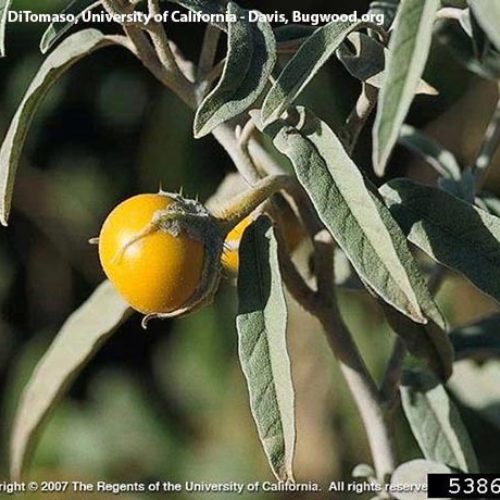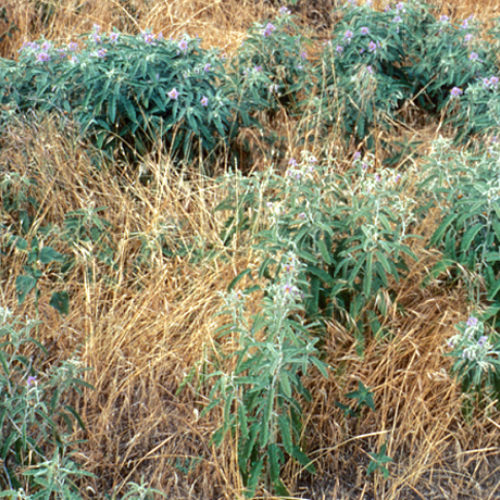Silverleaf Nightshade
Solanum elaeagnifolium

Family: Solanaceae
Other Common Names: purple nightshade, white horsenettle, tomato weed
Weed class: A
Year Listed: 1988
Native to: Central and Southwest United States, Mexico and Southern South America
Is this Weed Toxic?:
livestock
Legal listings:
This plant is also on the Washington State quarantine list. It is prohibited to transport, buy, sell, offer for sale, or distribute plants or plant parts of quarantined species into or within the state of Washington or to sell, offer for sale, or distribute seed packets of seed, flower seed blends, or wildflower mixes of quarantined species into or within the state of Washington. Please see WAC 16-752 for more information on the quarantine list. For questions about the quarantine list, contact the Washington State Department of Agriculture's Plant Services Program at (360) 902-1874 or email PlantServices@agr.wa.gov.
Why Is It a Noxious Weed?
Silverleaf nightshade lowers crop yield through competition. The species is also toxic to livestock. It contains toxic alkaloids that combine with sugars to produce glycoalkaloids which irritate the gastrointestinal tract.
How would I identify it?
General Description
A member of the tomato family, silverleaf nightshade is a branched and deep rooted perennial herb that grows 1 to 4 feet in height with purplish-blue flowers.
Flower Description
Flowers are blue, violet or, rarely white. There are 5 fused petals, ¾ inch across and flowers have bright yellow stamens.
Leaf description
Leaves are lance-shaped, 1 to 4 inches long by 1 inch wide and have wavy margins. Short silvery-white hairs give the plant a dusky or silvery-gray color.
Stem description
Stems have slender yellow spines.
Fruit Seed Description
Rounded berry that grows to around 0.4 inch in diameter, with sparse stellate (star-shaped) hairs.
Where does it grow?
Silverleaf nightshade is adapted to semi-arid regions. It will grow in pastures, cultivated fields and roadsides. Please click here to see a county level distribution map of silverleaf nightshade in Washington.
How Does it Reproduce?
Silverleaf nightshade reproduces by seed, rhizomes and root fragments.
How Do I Control It?
Mechanical Control
Hand-pull or dig plants, being careful to get all of the rootstock and dispose of the plants properly in the trash. Plants can re-grow after being clipped or mowed.
Herbicide Control
Silverleaf nightshade is difficult to control with herbicide because of its root system. Please refer to the PNW Weed Management Handbook, or contact your county noxious weed coordinator.
For More Information
See our Written Findings for more information about silverleaf nightshade (Solanum elaeagnifolium).







